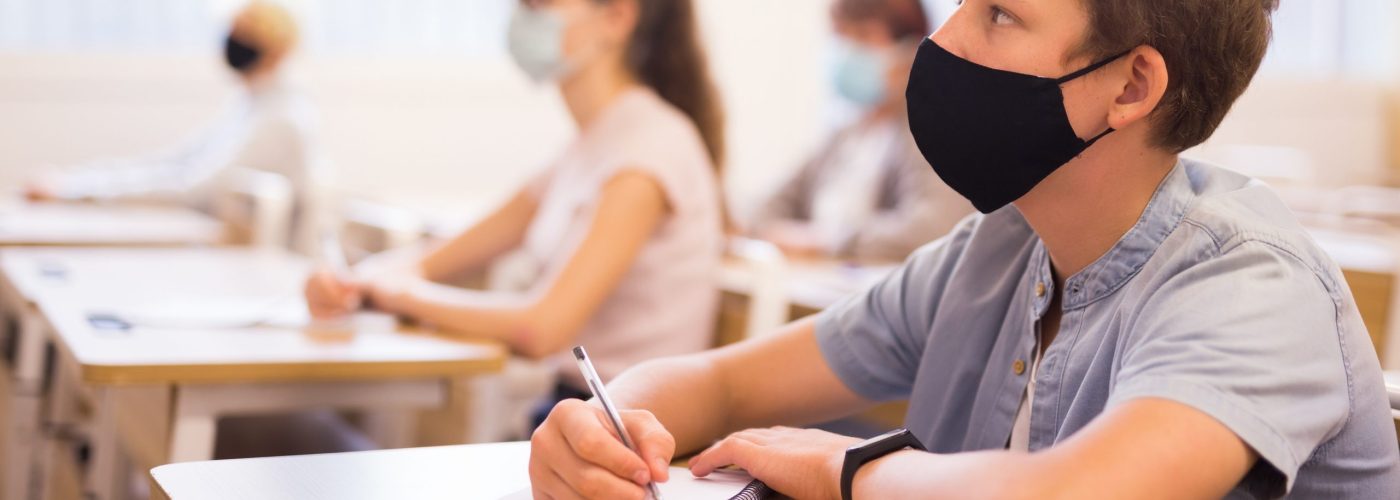Building ventilation systems reduce the spread of airborne diseases by half compared to natural ventilation for schools, offices and hospitality venues, research shows.
Ventilation specialists S&P UK has released the findings of detailed research carried out by their European R&D centre aimed at shedding light on whether mechanical or natural ventilation should be used to improve air quality and curb the risk of contracting airborne diseases such as Covid in indoor environments.
With lockdown easing and the UK vaccination rollout on track, more businesses, office managers, headteachers and other building owners are seeking clarity from the government, the scientific community and industry bodies on how best to minimise the spread of Covid in an enclosed space.
Covid is spread via infectious aerosols which can stay airborne for long periods, particularly in poorly ventilated areas.
The study by S&P UK found mechanical ventilation systems reduce by half the risk of Covid aerosol transmission compared to natural ventilation, such as opening windows and doors which has the added disadvantage of letting in noise, pollution and cold air in the winter.
The detailed scientific modelling and analysis by S&P researchers considered three scenarios: schools, offices, and bars/restaurants.
After four days in a classroom of 24 students wearing masks and an infected teacher, the accumulated probability of infection is 21% with natural ventilation – or five pupils infected. With mechanical ventilation, it is 9% – or two pupils infected. With no ventilation, seven contract Covid. If a student is positive rather than the teacher, the numbers are halved.
In the winter, opening windows for 10 minutes every hour results in a 4.8% infection rate, meaning four cases after day four – twice as high as mechanical ventilation.
Meanwhile, in a restaurant with 35 unmasked customers but a masked infected waiter, with natural ventilation, two customers are infected in the first two hours, and two more are infected over the second two-hour period, giving a total of four cases. With mechanical ventilation, it is halved to one infected customer in each two-hour period, or a total of two.
With an infected customer instead of the waiter, with open windows, three customers contract Covid by the end of night. With mechanical ventilation, it is one.
In an open plan office with 40 workers where one is infected, with everyone wearing masks, there are four infected employees after four days with natural ventilation, and two with mechanical. With no masks, it rises to 13 with open windows and eight with mechanical.
There are long-held concerns that most offices only recirculate existing air with air-conditioning units, rather than pumping in fresh air using mechanical ventilation systems.
The authors, S&P Global CFD (computational fluid dynamics) engineers Albert Carrasquer and Jordi Fabregat, concluded: “[Mechanical] ventilation can reduce more than twofold the infection risk when compared to open windows. If a lower infection risk is desired, installation must deliver higher ventilation rates than those defined by [British] standards.”
The Scientific Advisory Group for Emergencies (SAGE) says building ventilation should be “integral to the Covid risk mitigation strategy for all multi-occupant public buildings and workplaces”.
Alex Finch, managing director of S&P UK, said: “Our research shows that investing in mechanical ventilation systems must be considered by anyone who helps to manage any indoor space, whether that’s a headteacher, an office manager or a restaurant owner.
“That’s because our evidence is clear: mechanised ventilation systems are twice as good as natural ventilation when it comes to reducing the risk of spreading airborne diseases like Covid-19 indoors.
“There’s plenty of generic advice on ventilation but so many sections of society are crying out for official and clear-cut guidance on the exact best ventilation for typical scenarios. We also recognise that the failure to distinguish between indoor mechanical or natural ventilation as part of this ongoing debate is not surprising as it’s a complex and new challenge.
“But we believe our research, inspected by our technical teams, will add some weighty evidence for specialists across the H&V sector and can help provide clarity for those who are looking to actively improve their work environments to minimise transmission of Covid.”
S&P UK Ventilation Systems is the UK subsidiary of leading global manufacturer Soler and Palau, and is the sole UK distributor of commercial, industrial and residential fans and ventilation systems.
Operating nationally, S&P UK Ventilation Systems is a leading fan, air movement and ventilation systems provider offering over 10,000 products along with technical sales support and consultancy. It is a subsidiary of Spanish owned S&P Group, whose global operations span over 90 countries and includes major R&D centres in Europe, Singapore, USA and Brazil.





